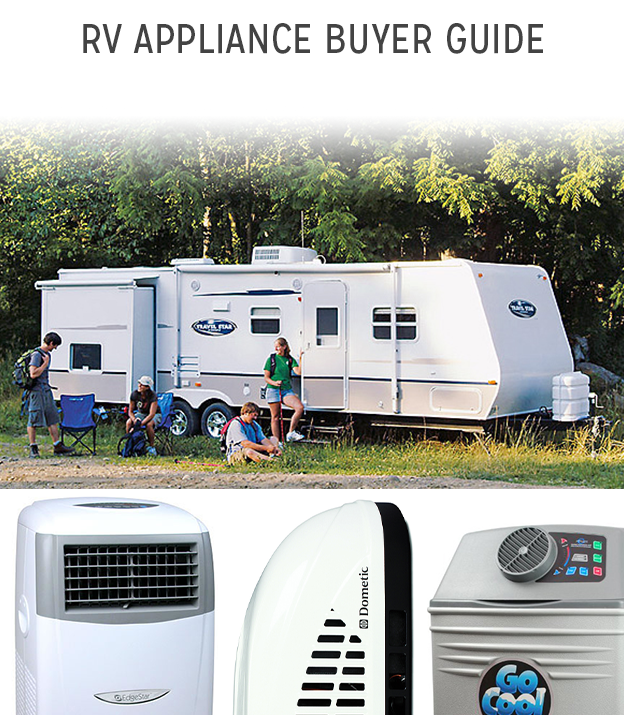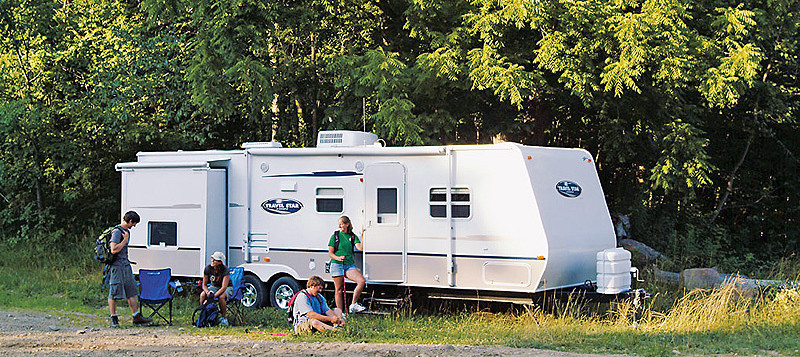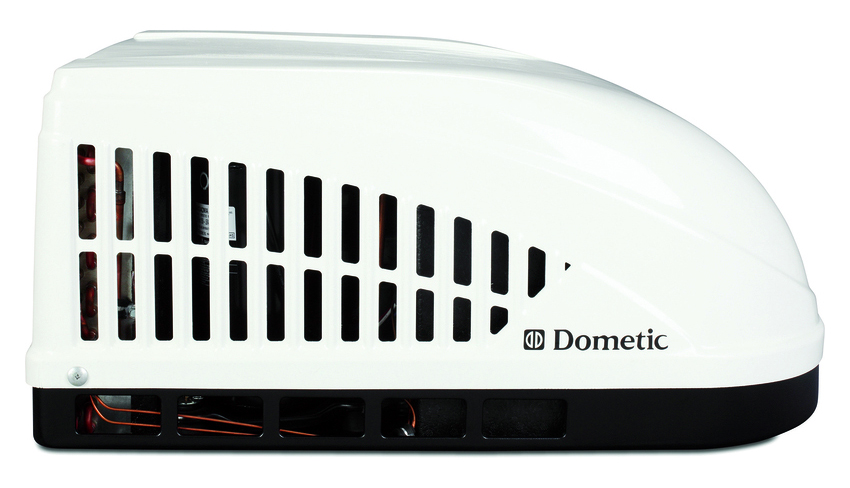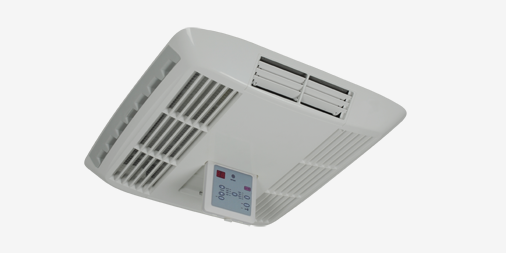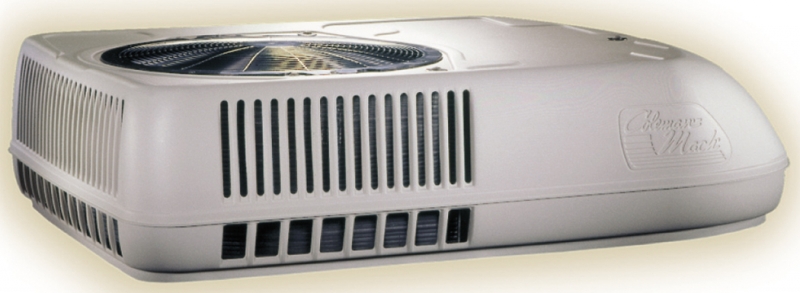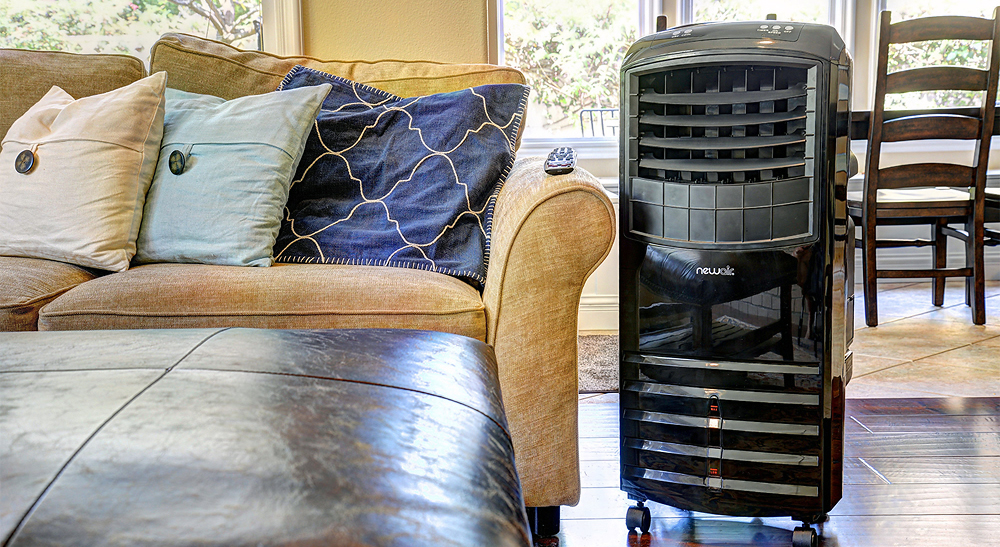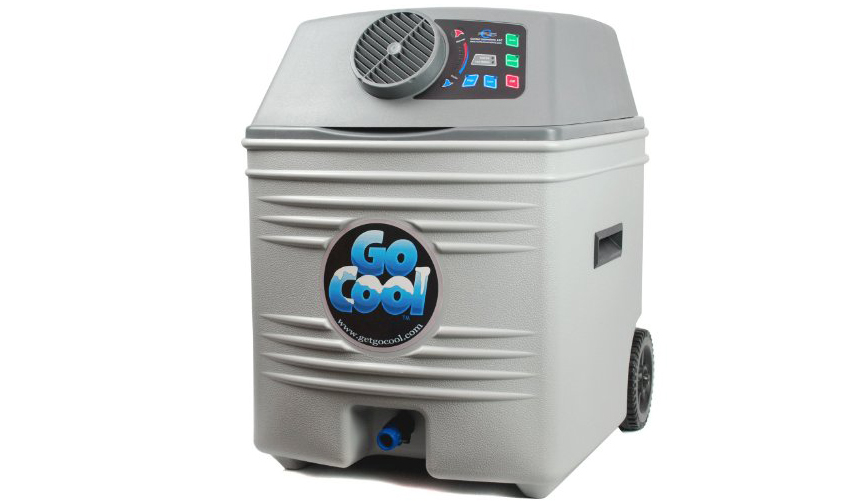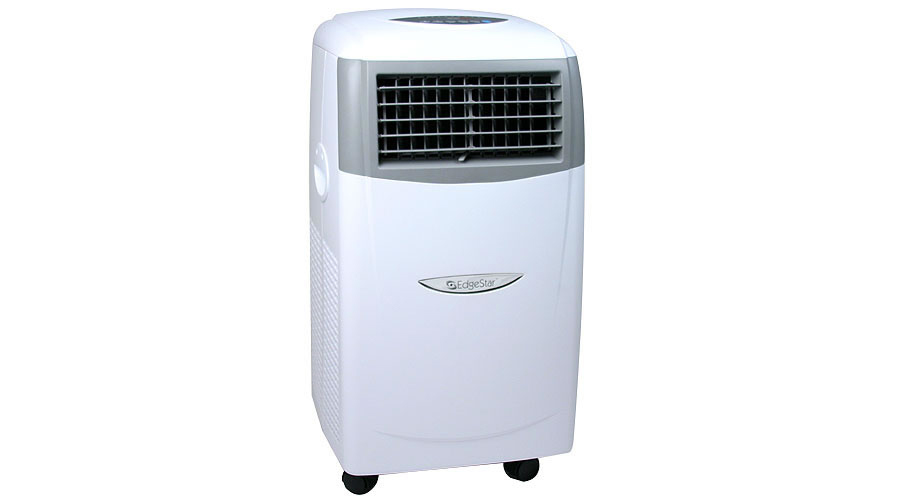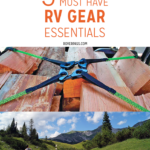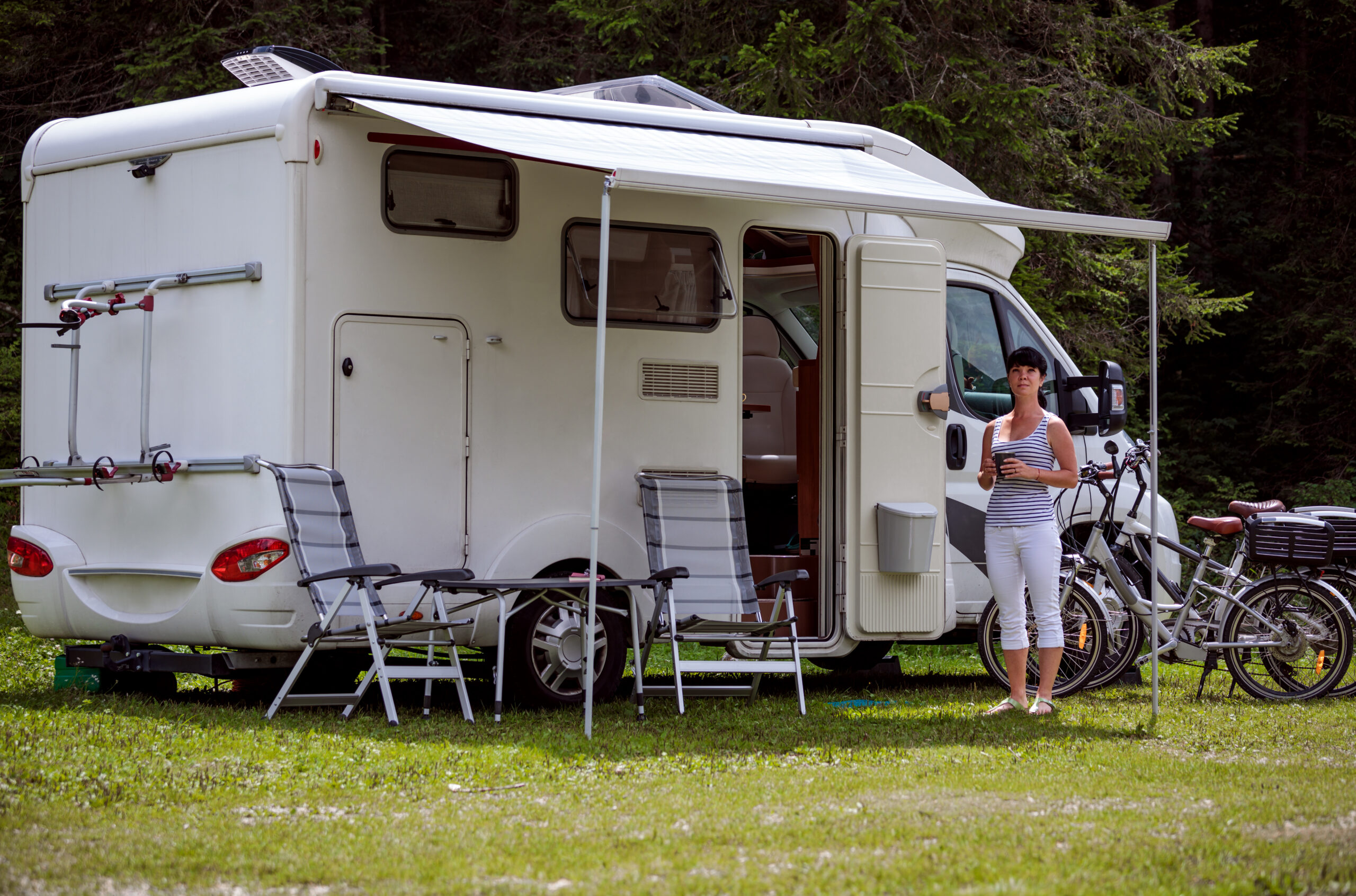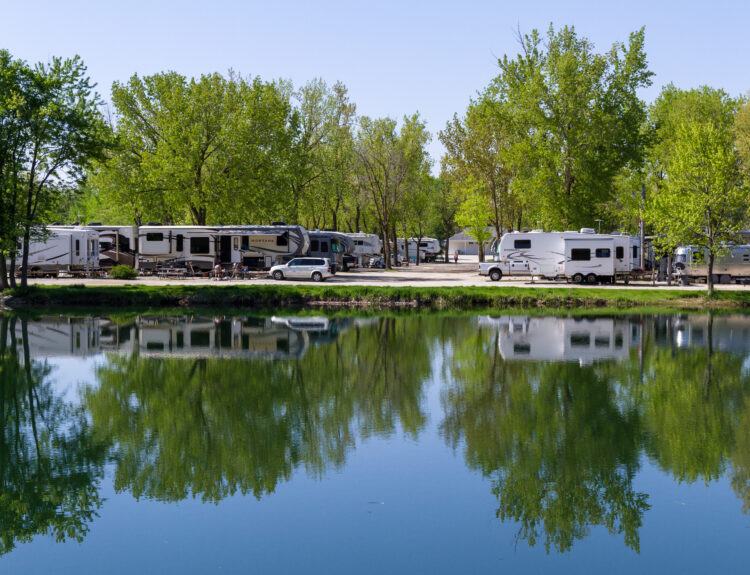The last thing you want to remember about your summer road trip is the unbearable heat, especially when you’re inside your camper. Maybe it’s time to add a new RV air conditioner unit?
Researching air conditioners is a tedious business. But at some point, the RV air conditioner that came with your camper may need to be replaced, or you will decide to purchase an additional unit or two. At RoverPass, we know you’d much rather be hiking, fishing, or almost anything other than web surfing AC manufacturer websites and reading through customer reviews. So we did some of the work for you.

Newair.com
What to consider when purchasing an RV air conditioner unit
How you answer these basic questions will determine whether you should look at rooftop or portable AC units; ducted or non-ducted.
- What time of year are you on the road the most?
- Do you spend more time in the south or north?
- How much square footage do you need to cool?
- How much money is in your RV AC unit budget?
- What is your max amp output?
You should note that even if you find that a portable unit is sufficient for your purposes, for example, depending on other variables, it may actually not be your best option. If your RV has built-in air vents and pipes, you need a ducted rooftop AC that integrates with your airflow system. Otherwise, shop around for non-ducted units that use fans to expel cool air.
RV Air Conditioner Unit Buyer Tips
Be sure to do your research. Read product specs so you know exactly what you’re supposed to get. Many AC units made for small living spaces can be used in an RV, but you want a manufacturer’s guarantee on that. One of our email subscribers told us about a warranty battle he faced with one air conditioner manufacturer. By reading customer reviews, you can also find out which companies rank high for customer service.
How to Research RV Air Conditioner Units:
Make a list of the two or three AC units you’re considering purchasing. Go to RV forums and read both good and bad customer reviews. Here, you may also read about different AC units that are in the same class. Keep in mind that people are more likely to leave a review if they’ve had a bad experience. But you can glean a lot of good information by hearing about a company’s mistakes.
Here are some questions to ask manufacturer representatives and customers:
- What kind of warranty do you offer?
- What is the average lifespan of this product?
- How noisy is the unit?
- Does it have intelligent cooling, a remote control, or any other convenient features?
- What is the installation process? Can anyone install it or do you need to hire a professional?
- How much power does it require to run optimally?
- Are extra filters included?
- Do I need to purchase any additional items?
Top RV Air Conditioner Units
Based on RV forums, top AC brands for campers are Coleman, Gree, Atwood, Dometic, and Advent. A lot of the AC units for RVs seem pretty identical. That’s why it’s important to do your research, read specs, and comb through current product reviews.
Rooftop ACs
One of the most popular types of air conditioners for RVers is the rooftop model. The reason is simple: It takes up the least amount of space and it’s versatile. These models are duct or non-ducted and they run from about 15,000 BTUs on the high end to as low as 5,000 BTUs.
Dometic Brisk II
The Brisk II is a 15,000 BTU, low-amp model designed to run simultaneously with other appliances. It is configured for duct and non-ducted installation, has a three-speed blower, and multi-directional air slots.
The Brisk II has a digital thermostat and remote control. It comes with a washable HEPA-style filter. Reviewers say the unit is quiet.
How it stands out: The Brisk II is 19% lighter than ACs in the same class. It also comes in a 13,500 BTU unit.
Read more about the Brisk II and get product specs here.
Atwood Air Command – Non-Ducted
In its class, the Atwood Air Command is one of the most efficient units out there. It’s available in 16,000 and 18,000-equivalent BTUs. The digital thermostat is operated by remote control. One customer described the Atwood in a five-star review as lighter, cheaper, and more efficient than comparable brands. Another said the unit is a great deal and stands up to its claims.
See Atwood Air Command Specs here.
Coleman Polar Cub
This RV rooftop air conditioner delivers just 9200 BTUs of cool air. The Coleman Polar Cub is designed for RVers who don’t need to blast the AC. So if most of your trips are in northern states or between October and April, you can save a lot of dough with a low-BTU AC.
Tips: You can help the Coleman Polar Cub work at capacity by parking in shade, eliminating cool-air leaks. Also, keep your filters clean and replace them regularly. And use your awnings and blinds to block direct sunlight from warming the RV.
You can see Coleman Polar Cub specs here.
Portable ACs
Portable AC units, including vented and vent-free, do a good job cooling down most spaces, but they can be a temperamental. On the one hand, the vent-free appliances converts evaporated water to cool air. But for that to happen, you need to be in a dry climate. So no trips to Florida. Or Texas. Or Louisiana. Arizona — here we come! Since some of us can’t avoid humid states, the vented portable AC is a better option. These units cost less than their non-vented cousins, but take up more space and must be near a window. Some folks complain that they’re loud.
Unlike rooftop units, “swamp coolers” — as some RVers call evaporative coolers — don’t guzzle as much energy. You may need to rig up a hose, though, because if the water does not fully evaporate, you can have a leak. Finally, these floor units can take up more space than you have to spare. And some must be close to a window for venting.
NewAir
The NewAir AF-1000B portable evaporative cooler can lower room temperature up to about 300 square feet, which covers the standard RV. It’s less costly and does not require as much electricity as traditional AC units. It’s also environmentally friendly.
The NewAir has a timer, remote control, water level reader, three fan speeds, and an oscillator. Air temperature can go down as much as 30 degrees.
See the NewAir AF specs here.
GoCool 12v Portable RV Air Conditioner
The GoCool portable air cooler for campers or tents is a 35-pound, 12-volt appliance designed to reduce heat in small spaces. It draws under 1.6 amps and has modifiable temperature settings. The nifty little cube produces cool air by blasting frozen gel packs or ice with warm air. Customers tend to like the GoCool, though admittedly, it’s not like having 10,000 BTUs blowing through your rig.
The GoCool has a one-year warranty and 24-hour telephone customer service to help you through set-up and for problem-solving. It has a built in thermostat and a six-foot drainage tube to prevent leaks.
You can see product specs at ComfortInnovations.com.
EdgeStar Compact 8,000 BTU Portable Air Conditioner
This portable AC cools up to 250 square feet and according to manufacturer specs, it runs on less than $1 per day. The EdgeStar Compact has a digital thermostat, three-speed fan, and auto-drain system.
Bonus points: Satisfied reviewers suggest setting the automatic timer to kick in about 20 minutes before returning to your stifling hot camper.
Cons: The EdgeStar has a window vent kit and exhaust hose. If you don’t have around 20 or so inches of floor space under a window, you will need a hose extender. Also, it may be a challenge to fully conceal the vent hose wrapped around the perimeter of your RV.
Go to EdgeStar.com to see unit description.
Buy Smart, Not Cheap
It’s just human nature to get the best deal you can, but when shopping for an big-ticket item like a portable or rooftop AC, you get what you pay for. Saving a few dollars right now can end up costing big bucks later on.
Before handing over your credit card, consider all the variables — from how much space you need to cool to what time of year you’re traveling. The most expensive unit with the highest BTU power may suit your needs in August when traveling in your fifth wheel from Texas to Louisiana. But a unit that removes heat and dehumidifies your camper may be sufficient for your autumn road trip in the Pacific Northwest.
Have you recently purchased a new RV air conditioner system? What unit did you buy? Tell us how you chose your RV air conditioner unit in the comments below!

